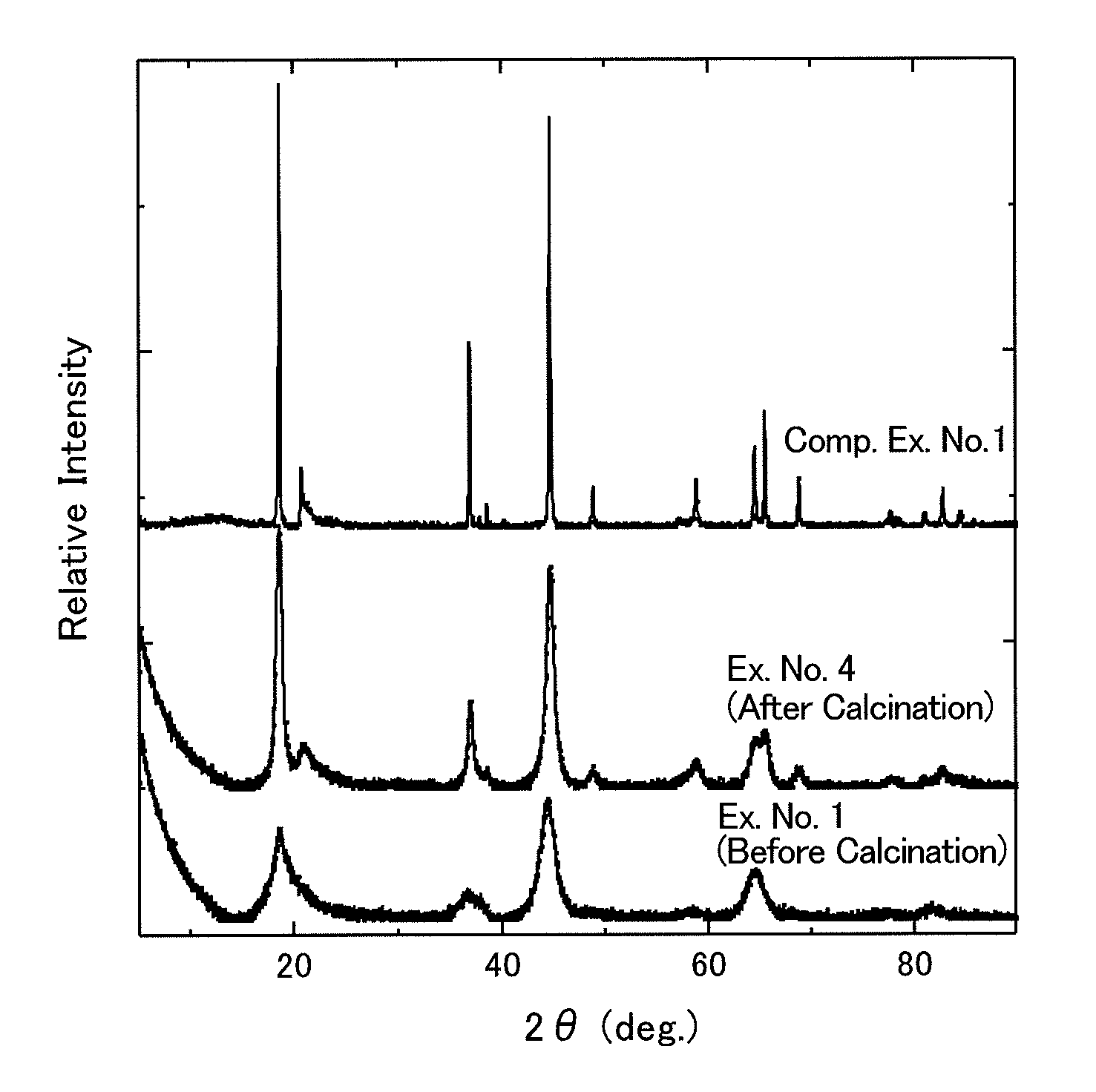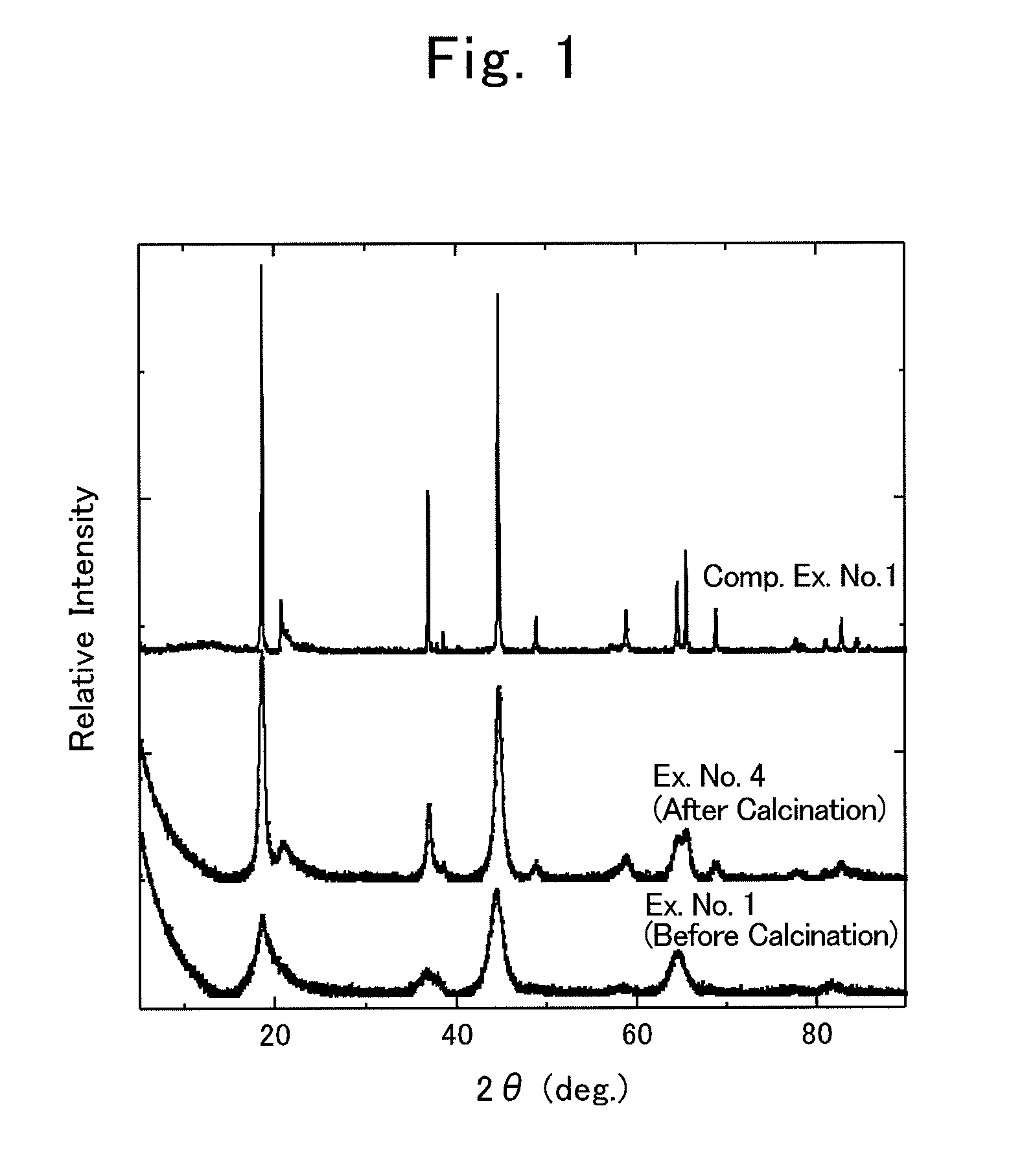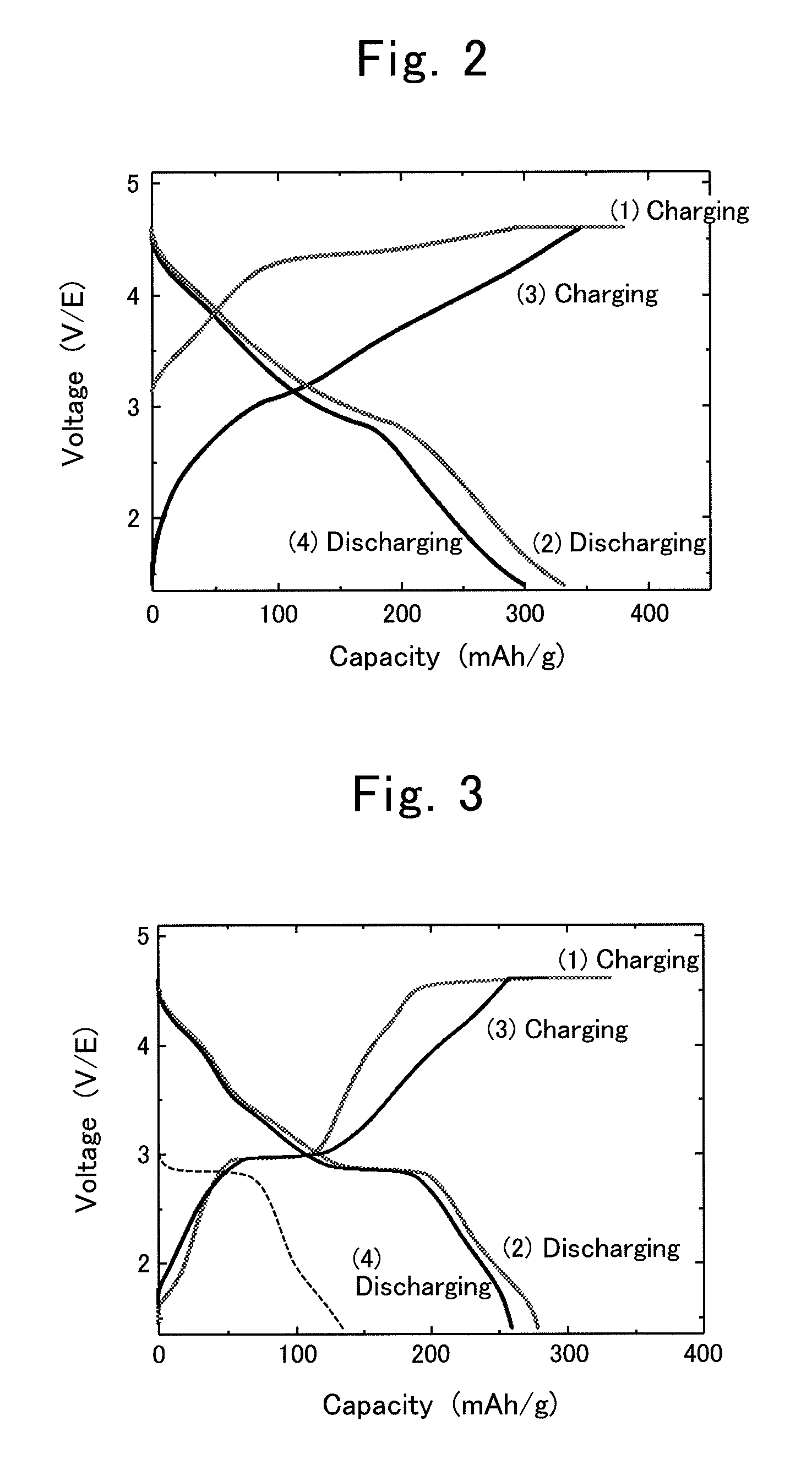Production process for composite oxide, positive-electrode active material for lithium-ion secondary battery and lithium-ion secondary battery
a production process and active material technology, applied in the direction of manganates/permanentates, cell components, sustainable manufacturing/processing, etc., can solve the problems of not being able to obtain nano-order fine particles, and not being able to make composite oxides including lisub>2
- Summary
- Abstract
- Description
- Claims
- Application Information
AI Technical Summary
Benefits of technology
Problems solved by technology
Method used
Image
Examples
examples
[0078]Hereinafter, the present invention will be explained in detail while giving specific examples of the production process for composite oxide, positive-electrode active material for lithium-ion secondary battery and lithium-ion secondary battery according to the present invention.
[0079]Based on the aforementioned embodiment modes, composite oxides comprising dual crystalline structures of layered rock-salt structure and spinel structure were synthesized by the following procedures.
example no.1
Example No. 1
Synthesis of Li2MnO3-Spinel Mixed-Phase Compound
[0080]0.10-mol (i.e., 4.2-gram) lithium hydroxide monohydrate, LiOH.H2O, was mixed with 0.15-mol (i.e., 10.3-gram) lithium nitrate, LiNO3, to prepare a molten-salt raw material. To this, 0.010-mol (i.e., 0.87-gram) manganese dioxide, MnO2, was added as a metallic-compound raw material, thereby preparing a raw-material mixture. That is, the ratio, namely, (Transition Metal in Metallic-compound Raw Material) / (Lithium Metal in Molten-salt Raw Material), was 0.01 mol / 0.25 mol=0.04.
[0081]The raw-material mixture was put in a crucible being made of mullite, and was then vacuum dried by a vacuum drier at 120° C. for 12 hours. Thereafter, the drier was returned back to the atmospheric pressure; the crucible, in which the raw-material mixture was held, was taken out and was then transferred immediately to an electric furnace, which had been heated to 350° C. Then, the electric furnace was raised to 400° C. in temperature, and so th...
example no.2
Example No. 2
Synthesis of Al-substituted Li2MnO3-Spinel Mixed-Phase Compound
[0087]0.10-mol (i.e., 4.2-gram) lithium hydroxide monohydrate, LiOH.H2O, was mixed with 0.20-mol (i.e., 13.8-gram) lithium nitrate, LiNO3, to prepare a molten-salt raw material. To this, a precursor was added as a metallic-compound raw material in an amount of 1.0 g to prepare a raw-material mixture. Hereinafter, a synthesis procedure for the precursor will be explained.
[0088]0.95-mol (i.e., 272.7-gram) Mn(NO2)2.6H2O, and 0.05-mol (i.e., 18.8-gram) Al(NO3)3.9H2O were dissolved in 500-mL distilled water to make a metallic-salt-containing aqueous solution. While this aqueous solution was stirred within an ice bath using a stirrer, one in which 50-gram (i.e., 1.2-mol) LiOH.H2O had been dissolved in 300-mL distilled water was dropped to the aqueous solution over a time period of 2 hours to alkalify it, thereby precipitating deposits of metallic hydroxides. While keeping this solution holding the deposit therein ...
PUM
| Property | Measurement | Unit |
|---|---|---|
| molar ratio | aaaaa | aaaaa |
| molar ratio | aaaaa | aaaaa |
| molar ratio | aaaaa | aaaaa |
Abstract
Description
Claims
Application Information
 Login to View More
Login to View More - R&D
- Intellectual Property
- Life Sciences
- Materials
- Tech Scout
- Unparalleled Data Quality
- Higher Quality Content
- 60% Fewer Hallucinations
Browse by: Latest US Patents, China's latest patents, Technical Efficacy Thesaurus, Application Domain, Technology Topic, Popular Technical Reports.
© 2025 PatSnap. All rights reserved.Legal|Privacy policy|Modern Slavery Act Transparency Statement|Sitemap|About US| Contact US: help@patsnap.com



